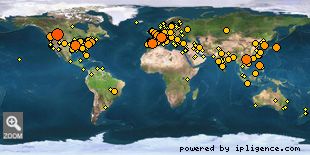 » NMR Jobs
» NMR Jobs |
|
|
|
|
|
|
 » Cool papers
» Cool papers |
|
|
|
|
|
|
 » NMR books
» NMR books |
|
|
|
|
|
|
 » NMR theses
» NMR theses |
|
|
|
|
|
|
 » NMR blogs
» NMR blogs |
|
|
|
|
|
|
 » NMR news
» NMR news |
|
|
|
|
|
|
 » NMR tweets
» NMR tweets |
|
|
|
|
|
|
 » NMR videos
» NMR videos |
|
|
|
|
|
|
 » NMR pictures
» NMR pictures |
|
|
|
|
|
|
 » Online Users: 303
» Online Users: 303 |
| 0 members and 303 guests |
| No Members online |
| Most users ever online was 1,278, 01-09-2024 at 07:38 AM. |
|
 » Welcome!
» Welcome! |
Welcome, NMR world!

Our visitors map.
|

 [NMR paper] Protein Allostery Study in Cells Using NMR Spectroscopy [NMR paper] Protein Allostery Study in Cells Using NMR Spectroscopy |
|
Apr 24, 2024 - 5:58 AM - by nmrlearner
|
 Protein Allostery Study in Cells Using NMR Spectroscopy
Protein Allostery Study in Cells Using NMR Spectroscopy
Protein allostery is commonly observed in vitro. But how protein allostery behaves in cells is unknown. In this work, a protein monomer-dimer equilibrium system was built with the allosteric effect on the binding characterized using NMR spectroscopy through mutations away from the dimer interface. A chemical shift linear fitting method was developed that enabled us to accurately determine the dissociation constant. A total of 28 allosteric mutations were prepared and grouped to negative...
More...
|

 0 Replies | 81 Views
0 Replies | 81 Views
|
|
 » BioNMR wiki
» BioNMR wiki |
|
|
|
|
|
|
 » NMR discussion
» NMR discussion |
|
|
|
|
|
|
 » NMR conferences
» NMR conferences |
|
|
|
|
|
|
 » NMR software
» NMR software |
|
|
|
|
|
|
 » Pulse sequences
» Pulse sequences |
|
|
|
|
|
|
 » NMR community
» NMR community |
|
|
|
|
|
|
 » NMR presentations
» NMR presentations |
|
|
 » NMR web resources
» NMR web resources |
|
|
|
|
|
|
 » NMR feature requests
» NMR feature requests |
|
|
 » NMR bookmarks
» NMR bookmarks |
|
|
|
|
|
|
 » Stats
» Stats |
Members: 3,202
Threads: 25,753
Posts: 26,139
Top Poster: nmrlearner (23,197)
|
| Welcome to our newest member, bpadmanabhan |
|



